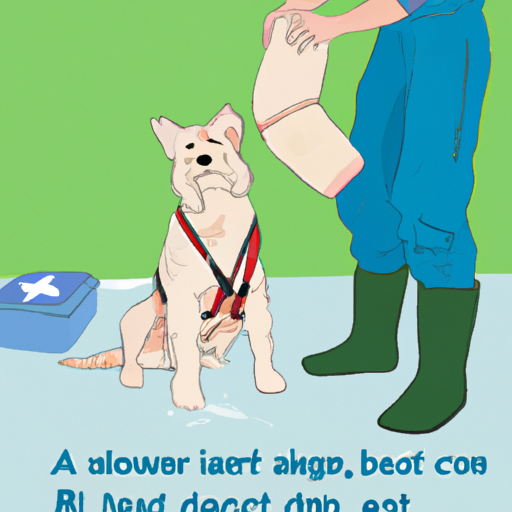As a caregiver, you’re always prepared to give your pet the care it needs. But are you prepared for emergencies? One common situation you may encounter is a wounded or injured back leg. Let’s equip you with the knowledge you need to handle this situation.
1. Assessing the Situation
Before you start, it’s crucial to understand the gravity of the situation. Look for signs of discomfort like whimpering, limping, or bleeding. Remember, dogs can often hide their pain, so pay close attention to their behavior.
- Bleeding: If the wound is bleeding heavily, it is an emergency. Apply pressure using a clean cloth and rush your pet to the vet.
- Limping or Swelling: If your pet is limping or if the leg is swollen, but no open wound is visible, it’s possible there’s a sprain or fracture. Try to keep your pet calm and restrict movement.
2. Preparing the Bandage
Once you’ve assessed the situation, it’s time to prepare the bandage. Here is a list of materials you’ll need:
- Non-stick gauze pads
- Cotton padding
- Self-adhesive or cohesive bandage
- Scissors
Ensure you have all materials handy before you start.
3. Applying the Bandage
Now, let’s go through the process step-by-step:
- Clean the Wound: If there’s an open wound, clean it gently using a pet-safe antiseptic. Avoid using hydrogen peroxide as it can slow down healing.
- Apply Non-stick Gauze: Place the non-stick gauze pad over the wound. It will absorb any discharge and prevent the bandage from sticking to the wound.
- Wrap with Cotton Padding: Wrap the leg with cotton padding. It provides support and prevents the bandage from getting too tight.
- Secure with Self-adhesive Bandage: Finally, secure everything in place using the self-adhesive bandage. Ensure it’s snug but not too tight.
4. Post Bandaging Care
After you’ve bandaged the leg, it’s essential to ensure your pet is comfortable and the bandage stays clean and dry. Regularly check for any signs of discomfort, swelling, or chewing at the bandage. If you notice any of these signs, consult your vet immediately.
5. Recognizing When to Seek Professional Help
Sometimes, home care might not be enough. Here are a few signs when you should seek professional help:
- Continuous bleeding
- Visible bone or deep wounds
- Excessive pain or distress
- Swelling above or below the bandage
Remember, it’s always better to be safe than sorry. If you’re unsure, call your vet.
FAQ Section
Q1: How often should I change the bandage?
A1: Ideally, the bandage should be changed every 24 hours or if it gets wet or dirty.
Q2: Can I use human bandages?
A2: It’s best to use pet-specific bandages as they’re designed to accommodate the skin and fur of animals.
Q3: My dog is trying to chew the bandage, what should I do?
A3: Try to distract your dog with toys or treats. If they continue, it’s best to consult your vet as the bandage might be causing discomfort.
Remember, your role as a caregiver is vital for your pet’s recovery. Stay calm, act promptly, and when in doubt, always seek professional help.



